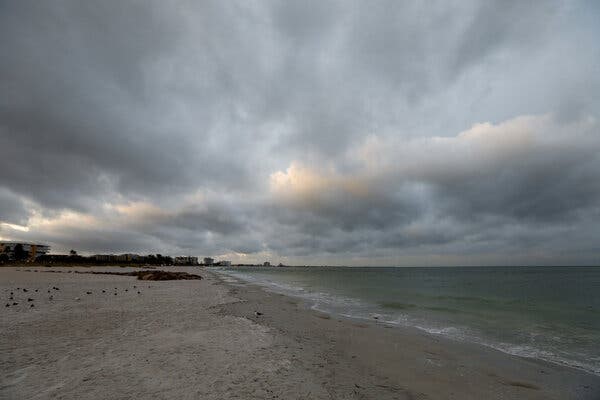By: Eva Li
Tropical Storm, Debby, rapidly strengthened into a hurricane on Sunday night, hours before it was expected to make landfall over Florida’s Big Bend coast early Monday. It will bring potentially “catastrophic flooding” and heavy rainfall to the Southeast region this week, forecasters said. Officials in Florida, Georgia and South Carolina activated emergency resources, opened temporary shelters and urged residents of low-lying coastal areas in the storm’s path to evacuate, as Debby was expected to bring a life-threatening storm surge.
Here’s what people know about the storm. Debby brought tropical storm conditions over the Gulf of Mexico and strengthened rapidly into a hurricane on Sunday night with winds of 80 miles per hour. It is predicted to make landfall early on Monday.
A hurricane warning was in effect for the Florida Gulf Coast and tropical storm warnings and storm surge warnings were in place for along the coasts of Florida, Georgia and South Carolina. Up to 10 feet of storm surge was expected in some areas. “This is a life-threatening situation,” the National Hurricane Center said on Sunday. Tornadoes were a risk through Monday morning across Florida and parts of southern Georgia as the storm approached.
Gov. Ron DeSantis of Florida activated about 3,000 members of the state National Guard to help respond to the storm. Fifteen counties issued voluntary or mandatory evacuation orders, affecting thousands of residents where storm surge and major flooding was expected.
Officials urged residents to heed evacuation orders and plan for potential power outages. In Hernando County, north of Tampa, voluntary evacuations began on Saturday night and a shelter was set up at a local school. “A life-threatening storm surge was expected for Tampa and other parts of the Florida Gulf Coast,” the National Weather Service said.
“Once it reaches Florida’s shores, Debby’s effects will be less about its winds and more about its rains,” DeSantis said at a news conference on Sunday. “The storm is expected to then move across southern Georgia from Monday into Tuesday,” the Hurricane Center said.
Debby was expected to unleash six to 12 inches of rain in parts of Florida throughout the week. Rainfall of 10 to 20 inches was expected in Georgia and South Carolina, with up to 30 inches in some areas through Friday, forecasters said.
The storm was expected to reach Georgia early on Tuesday. The governor, Brian P. Kemp, on Saturday declared a state of emergency. Gov. Henry McMaster of South Carolina, who also declared a state of emergency ahead of the storm, urged residents to take warnings seriously.
“It is critical that residents in potentially affected areas start making preparations and plans in case it is necessary to take quick action,” he said. Forecasters expect Debby to land as a hurricane-strength storm somewhere over the Florida Panhandle early on Monday. He also warned of potential “catastrophic flooding” from heavy rainfall along the coasts of Georgia and South Carolina Tuesday into Wednesday.
In May, forecasters with the National Oceanic and Atmospheric Administration predicted an “above normal” number of named storms for the 2024 Atlantic hurricane season, with 17 to 25 storms expected. Debby is the fourth named storm so far.
The first was Alberto, which made landed in Mexico as a tropical storm and left at least four people dead. Alberto was followed by Beryl, which swept the Caribbean and Texas just over a week later, and became the earliest Category 5 hurricane ever recorded. Later, in July, came Tropical Storm Chris, which devastated Mexico.











